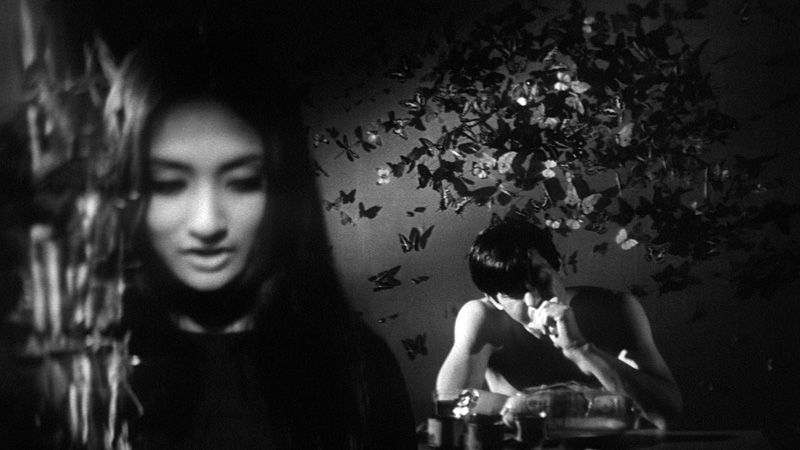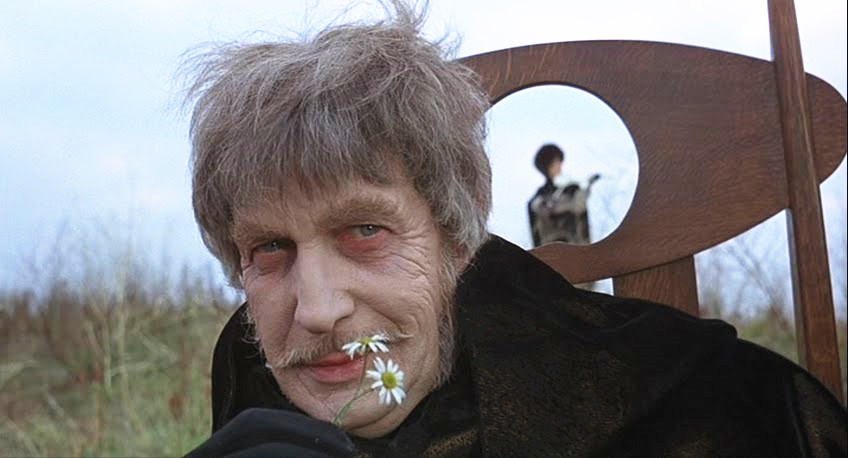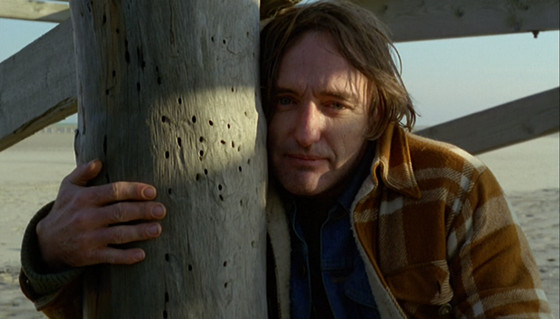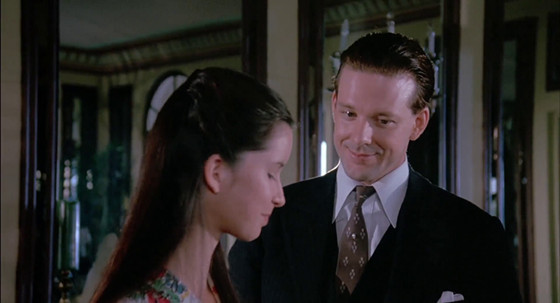5. Branded to Kill (1967)

Certainly Seijun Suzuki’s most famous film, this anarchic pisstake on B-movie platitudes is an artful escapade and one that has proved hugely influential on the likes of Park Chan-wook, Jim Jarmusch, Quentin Tarantino, and John Woo amongst others. This is the film that composer John Zorn referred to as “a cinematic masterpiece that transcends its genre.”
Branded to Kill stars Jo Shishido as Goro Hanada, the Number Three Killer. A feared and revered hitman with a fetish for sniffing boiling rice (yes, you read that correctly), whose failed attempt to kill a mark –– a butterfly lit upon his gun –– has now turned him into a target. A yakuza film like no other, elements of James Bond, slapstick, surrealism, and more erupt on the screen.
To quote the aforementioned Jarmusch (his hitman picture Ghost Dog is #7 on this very list), a champion and admirer of Suzuki’s, “[Branded to Kill is] probably the strangest and most perverse ‘hit man’ story in cinema.”
4. The Abominable Dr. Phibes (1971)

Vincent Price in his campy prime is pitch perfect as the eponymous figure in Robert Fuest’s darkly comedic horror film The Abominable Dr. Phibes. Shit out of luck, and with the cards cruelly stacked against him, Anton Phibes (Price) is terribly disfigured in a car crash while rushing to be at the side of his ailing wife, who soon after perishes.
Now presumed dead, Phibes figures it’s the fault of the surgeons that botched a procedure on his bride and so, inspired by certain passages from the Old Testament––specifically the Ten Plagues of Egypt––Phibes commences one doozy of killing spree.
There’s a strong Ken Russell vibe to Fuest’s aesthetic, and the art deco designs, musical asides (Phibes is an organist with one heck of a house band), it’s a film that is, as Variety puts it “[an] anachronistic period horror musical camp fantasy… loaded with comedic gore of the type that packs theatres and drives child psychologists up the walls.”
It’s a blood-soaked celebration and the 1972 sequel, Dr. Phibes Rises Again, is frightful fun, too.
3. The American Friend (1977)

Oh man, The American Friend is one cool film. Wim Wenders (1984’s Paris, Texas) offers us an audacious adaptation of Patricia Highsmith’s 1974 novel “Ripley’s Game” (the third in Highsmith’s “Ripliad” series) is arguably one of the great films of the 1970s.
A wonderful distillation of contemporary German angst and anxious American noir, The American Friend pays homage to the American mavericks Nicholas Ray and Samuel Fuller (both of whom appear in the film, larger than life and cool as ice), and also s with references to Alfred Hitchcock (whose Strangers on a Train [1951] was a Highsmith adaptation, and one of the first), this atmospheric arthouse thriller has Tom Ripley (Dennis Hopper), an expat American and shady art dealer who is rapt in existential despair. Befriending Jonathan Zimmerman (Bruno Ganz), a Hamburg picture framer and family man with an incurable blood disorder, Ripley convinces him to carry out a contract killing.
A sadly beautiful incantation of movie magic, Wenders also gives us another superbly lensed film with the late cinematographer Robbie Müller, in a style inspired by American painter Edward Hopper. The results are, of course, quite astounding.
2. Sightseers (2012)

British director Ben Wheatley (High-Rise [2015], Free Fire [2016]) is no stranger to the cult film, and his 2012 film Sightseers lands like a lightning bolt. A bloody tale of a cross-country road trip that deforms into something strangely enough I’ll choose to describe as a light hearted killing spree.
The first run of the Sightseers script was written by co-stars Steve Oram and Alice Lowe before Amy Jump had a go and made it her own. But that said, it’s still a film that very much feels off the cuff, as if it were being filmed as it were happening in real-time.
“Well,” shared Wheatley with Taste of Cinema, “there was a massive amount of improvisation because those guys (Oram and Lowe) are so fucking good!”
The premise of the film, quickly stated, is an eccentric couple, Tina (Lowe) and Chris (Oram), still in the budding stages of their relationship, decide upon a cross-country road trip and soon devilishly decide to start offing everyone who annoys them and gets on their nerves.
Sightseers is an outstanding and relentless comedy borne of spite and it might even be your favorite film on this list. Fully endorsed, see it twice.
1. Eureka (1984)

So many of Nicolas Roeg’s 1980s films seemed to be unjustly ignored upon release (see 1980’s Bad Timing and 1985’s Performance), and this overlooked masterwork is no exception. “Eureka was very bad timing,” he explains. “It was the early 1980s: Reagan and Thatcher were in, greed was good, and here was a film about the richest man in the world who still couldn’t be happy. Politically and sociologically, it was out of step.”
Inspired by compelling true events, Eureka tells the story of a Klondike prospector who hits it rich, the fictional Jack McCann (Gene Hackman), based off of Sir Harry Oakes, who was murdered in the Bahamas, on an island he owned back in 1943.
In Roeg’s film, Jack’s tale jumps back in forth through his life, and we find his dynasty from the gold rush put in jeopardy as his adult daughter Tracy (Theresa Russell) and her husband Claude (Rutger Hauer) scheme away to usurp his fortune, even his soul. Simultaneously to this almost Shakespearean betrayal are a pair of greedy, mob-tied investors Mayakofsky (Joe Pesci) and Aurelio D’Amato (Mickey Rourke), but even they seem subdued compared to JAck’s own inner demons.
Director John Boorman (Deliverance [1972]) famously described Eureka as “the best picture ever made — for an hour”, and Danny Boyle (Trainspotting [1996]) recounted how inspiring he found the film; “There was a couple of scenes [in Eureka] in particular, a death scene, and a kind of orgy, and I remember I just felt completely breathless, just unable to catch a breath at all… It’s not a bad thing to aim for.”
As beautiful, bizarro, and byzantine as Roeg’s finest films, Eureka is a film in need of a reappraisal. “One of the richest movie labyrinths since Citizen Kane,” writes Film Comment’s Harlan Kennedy, and he’s not at all wrong. It’s another dizzying tour de force, and perhaps an unexpected one. “What Roeg brings to the party is a flair for the sensational,” enthused Roger Ebert, “for characters who are larger than their weaknesses, who are connected to great archetypal forces.”
Author Bio: Shane Scott-Travis is a film critic, screenwriter, comic book author/illustrator and cineaste. Currently residing in Vancouver, Canada, Shane can often be found at the cinema, the dog park, or off in a corner someplace, paraphrasing Groucho Marx. Follow Shane on Twitter @ShaneScottravis.